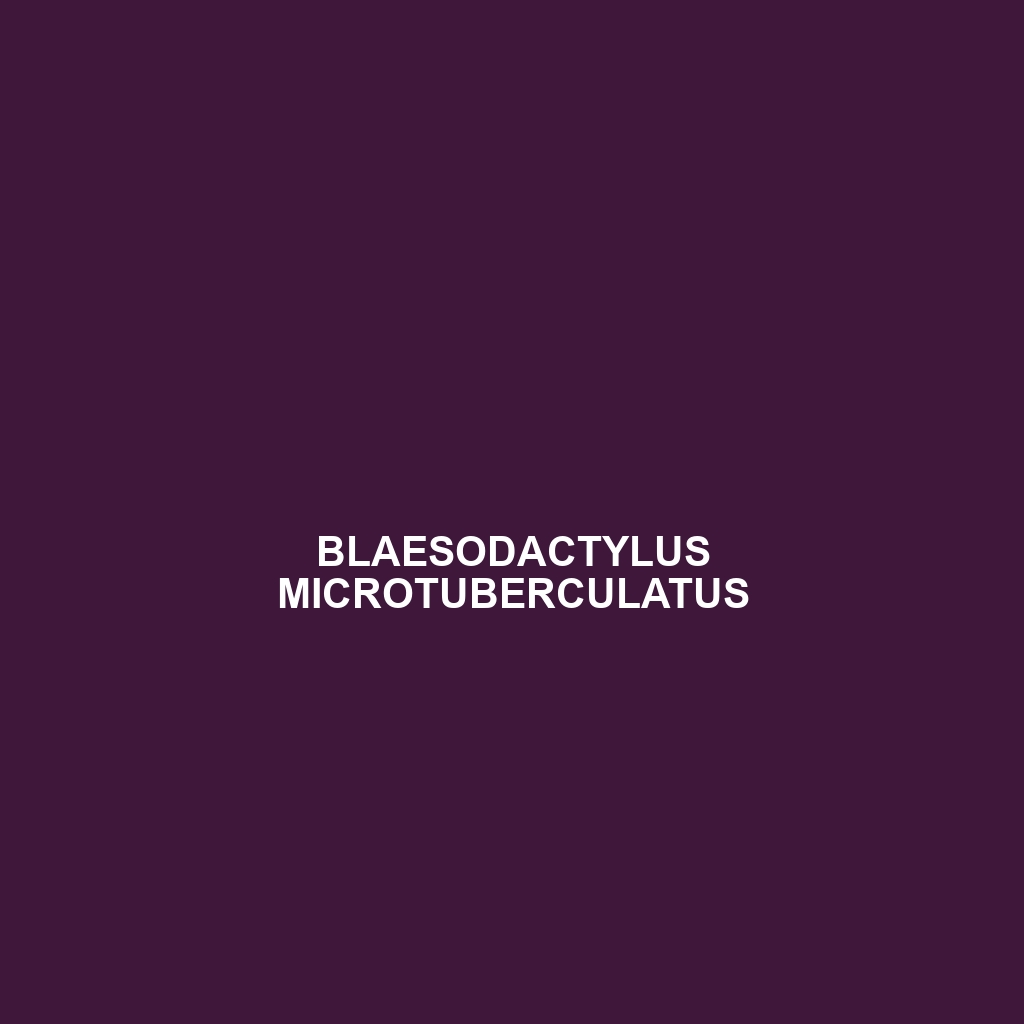Loading...
Tag: Camouflage Adaptations
Blaesodactylus boivini
Discover the fascinating Blaesodactylus boivini, a small to medium-sized lizard native to Madagascar's humid forests, known for its effective camouflage and remarkable climbing abilities. This nocturnal insectivore plays a vital role in its ecosystem by controlling pest populations while facing threats from habitat destruction and invasive species.
Blaesodactylus ambonihazo
<h2><b>:</b></h2> <p>The <i>Blaesodactylus ambonihazo</i>, also known as the forest gecko, is a nocturnal species native to Madagascar's montane rainforests, characterized by its slender body, vibrant earthy coloration, and remarkable climbing abilities. As a vital insectivore, it plays a crucial role in maintaining the ecological balance of its habitat while facing threats from habitat loss.</p>
Barisia jonesi
Discover the elusive Barisia jonesi, a striking reptile native to the lush forests of central and southern Mexico, known for its vibrant yellow or white banding and arboreal lifestyle. This vulnerable species plays a crucial role in its ecosystem by regulating prey populations and showcasing unique behaviors during its diurnal activities.
Atractus poeppigi
Discover the Atractus poeppigi, a nocturnal snake from the tropical rainforests of the Amazon Basin, recognized for its slender body, distinctive light and dark band patterns, and its role in controlling invertebrate populations. This secretive species, which reaches lengths of 40 to 50 centimeters, is a master of camouflage, thriving in moist environments while contributing to the ecological balance of its habitat.
Atractus potschi
Discover the Atractus potschi, a slender, nocturnal snake native to the Amazon Rainforest in Colombia and Ecuador, characterized by its dark brown and black coloration, and a diet primarily consisting of small invertebrates. This harmless species plays a vital role in its ecosystem by regulating invertebrate populations and is recognized for its unique burrowing behavior and reproductive habits.
Apostolepis serrana
Apostolepis serrana is a slender, nocturnal snake native to Brazil's Atlantic Forest, known for its dark coloration with pale bands. This species primarily preys on small amphibians and lizards, plays a vital role in its ecosystem, and is classified as 'Vulnerable' due to habitat loss.
Anolis williamsmittermeierorum
Discover the Anolis williamsmittermeierorum, a vibrant insectivorous lizard native to the tropical rainforests of the Caribbean. With its striking green and brown coloration, this agile climber plays a crucial role in its ecosystem while showcasing fascinating territorial behaviors and courtship displays.
Anolis fungosus
Introducing the Anolis fungosus, or fungus anole, a vibrant green lizard native to tropical Central America and the Caribbean, known for its impressive climbing skills and arboreal lifestyle. This species plays a crucial role in controlling insect populations and thrives in humid environments, displaying distinct sexual dimorphism with males exhibiting larger size and colorful dewlaps during territorial displays.
Anolis cryptolimifrons
Discover the Anolis cryptolimifrons, or cryptic anole, a small to medium-sized lizard native to the rainforests of Central America, known for its greenish-brown coloration and striking dewlap that ranges from orange to red. This agile insectivore plays a vital role in its ecosystem by controlling insect populations and serves as both predator and prey within its lush habitat.








